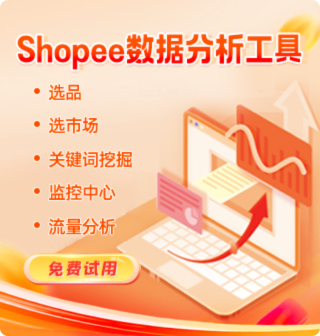-
用户188****2772
Introduction to Shopee Platform: A Detailed Overview
Shopee has emerged as one of the leading e-commerce platforms in Southeast Asia and beyond, fundamentally reshaping the way consumers and sellers interact in the digital marketplace. Since its launch in 2015, Shopee has grown rapidly by offering a convenient, localized, and mobile-friendly shopping experience. This article provides a comprehensive introduction to the Shopee platform, its core features, ecosystem, and actionable insights for users and businesses seeking to leverage its potential.
1. What is Shopee?
Shopee is a mobile-centric marketplace platform designed to connect buyers and sellers. It operates primarily as a marketplace, enabling third-party sellers to list products and interact directly with customers. Headquartered in Singapore and operated by Sea Group (formerly Garena), Shopee now serves multiple countries including Indonesia, Malaysia, Thailand, Vietnam, the Philippines, Taiwan, and more recently, Latin America.
Shopee’s model focuses on creating a seamless, localized shopping experience by integrating user-friendly technology, logistics partnerships, and tailored marketing strategies.
2. Key Features of the Shopee Platform
a) Mobile-First and User-Friendly Interface
Shopee’s app is the cornerstone of its user experience. Designed for mobile devices, it offers intuitive navigation, quick product search, and easy checkout. Features such as personalized product recommendations and in-app chat enhance engagement.
b) Wide Product Categories
Shopee supports a vast variety of product categories including electronics, fashion, beauty, home appliances, groceries, health products, and even digital goods and services. This diversity attracts a broad demographic of consumers.
c) Integrated Payment Solutions
ShopeePay, the in-house digital wallet, allows users to make secure and convenient payments. It supports cashless transactions, promotional cashback, and peer-to-peer transfers, significantly improving transaction efficiency.
d) Logistics and Delivery Management
Shopee partners with local and international logistics providers to ensure efficient shipping and delivery. The platform offers features such as real-time order tracking, multiple shipping options, and streamlined return processes.
e) Seller Tools and Support
For sellers, Shopee provides a robust seller center with tools to list products, manage orders, advertise via Shopee Ads, and analyze sales data. Educational resources and seller support services help onboard and scale merchant businesses.
f) Marketing and Engagement Channels
Shopee’s platform includes various engagement tools such as flash sales, daily vouchers, Shopee Live (live streaming), and gamified campaigns that enhance buyer-seller interaction and boost sales.
3. Shopee’s Business Model
Shopee operates mainly on a commission-based marketplace model, earning revenue from:
Commissions on each transaction (varies by category and market)
Advertising fees from sellers using Shopee Ads
Value-added services such as logistics and payment facilitation
Unlike traditional retailers, Shopee does not hold inventory, which allows for rapid scalability and diverse product offerings without the burden of stock management.
4. Why Shopee Stands Out: Core Strengths
a) Localization Strategy
Shopee customizes its platform for each country, incorporating local languages, payment methods, cultural preferences, and regulatory requirements. This localization improves user trust and engagement.
b) Strong Mobile Penetration
Targeting mobile-first markets with high smartphone adoption, Shopee’s app-centric approach meets consumers where they are, enhancing accessibility and convenience.
c) Comprehensive Seller Ecosystem
Shopee actively supports sellers with tools, training, and incentives. This ecosystem helps small and medium enterprises (SMEs) grow and sustain their online presence.
d) Integrated Ecosystem
By combining marketplace, digital payments (ShopeePay), and logistics into one ecosystem, Shopee creates synergies that simplify transactions for both buyers and sellers.
e) Data-Driven Personalization
The platform leverages big data and AI to tailor product recommendations, pricing, and promotions, driving engagement and conversion.
5. Practical Insights for Shopee Users and Sellers
For Buyers:
- Use Shopee’s flash sales and voucher campaigns to get better deals.
- Explore Shopee Live for real-time product demonstrations and exclusive offers.
- Enable ShopeePay for faster and often subsidized transactions.
For Sellers:
- Optimize product listings with clear images, detailed descriptions, and relevant keywords to improve search rankings.
- Leverage Shopee Ads and participate in platform-wide campaigns to increase visibility.
- Utilize Shopee’s analytics dashboard to track performance and adjust inventory and marketing strategies accordingly.
- Maintain high customer service standards through prompt communication and efficient fulfillment.
6. Challenges and Considerations
Competition: The platform hosts millions of sellers, making it critical to differentiate via pricing, quality, and service.
Logistics in Emerging Markets: Delivery infrastructure can vary greatly; understanding local logistics partners’ capabilities is important.
Platform Fees: Sellers must carefully consider commission rates and advertising costs when pricing products.
Regulatory Compliance: Sellers and Shopee must navigate diverse legal environments across countries, including tax rules and consumer protection laws.
Conclusion
Shopee’s platform is a powerful, integrated solution that has transformed e-commerce in emerging markets by making online shopping accessible, convenient, and localized. Its focus on mobile users, extensive product range, and robust seller ecosystem position it uniquely against competitors.
For consumers, Shopee offers a wide variety of products with attractive deals and convenient payment options. For sellers, it provides an accessible entry point into digital commerce combined with tools for growth and scale. Understanding the platform’s features and operational dynamics can help both buyers and merchants maximize their benefits and thrive in this vibrant marketplace.

